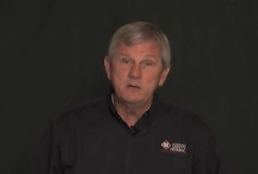
Psychology of Decision Making for First Responders in Disaster Response
Course Description:
This course addresses topics related to the psychological factors involved with first responder decision making during emergency response situations. The curriculum focuses on emergency management services personnel’s ability to recognize and identify the key indicators of decision making in disaster response. This course is drawn from the concepts that make up Crew Resource Management. The psychology behind the ability to make good decisions on scene will be reviewed and implemented by practice-based scenarios. This course is intended for all types of emergency response personnel, including emergency medical services, firefighters, law enforcement officers, emergency management officials and emergency department nurses. A variety of training methods will be used including PowerPoint presentations, video case histories, and individual exercises.
Target Audience
Academic Faculty/Staff, Federal Government Employees, State Government Employees, Local Government Employees, Non-Government Employees and Students
Learning Objectives
- Identify the functions and responsibilities of first responders during emergency operations
- Identify the resources needed for implementing CRM
- Understand the signs, symptoms and causes of tunnel vision
- Identify and discuss the skills needed to improve “Critical Decision Making” at all types of incidents
- Demonstrate the ability to utilize the “Risk vs. Benefit” model at all-hazards incident responses
- Demonstrate the correct method in applying the “DECIDE” model in decision making at incidents involving hazardous materials
- Illustrate the correct procedures for applying the “Simple Triage and Rapid Treatment” (START) triage system and the “All Risk Triage Tag”
- Describe and illustrate the correct procedures for using the Emergency Response Guidebook
Instructors:

Sam Hansen, CET, EMT-P
Mr. Sam Hansen, CET, EMT-P and former Battalion Chief with the Vestavia Hills, Alabama Fire Department has over 35 years’ experience in the fire service and as an emergency response consultant. Mr. Hansen provides industrial rescue services and training to a variety of private clients including, the aerospace industry, chemical manufacturing, petro-chemical companies, military facilities, and pulp and paper mills. In addition to his extensive industrial background, Mr. Hansen has taught the Incident Management System (IMS) and confined space rescue to a variety of organizations across the United States including law enforcement, military, conservation officers, foresters, EMT's and fire service personnel.
He holds a B.S. degree in Public Safety Administration along with an AAS degree in both Emergency Medical Services and Fire Science. He is a Certified Environmental Trainer (CET), certified by the National Environmental Training Association. He presently serves as an adjunct instructor for several out of state colleges as well the University of Alabama at Birmingham, Center for Labor Education and Research (CLEAR), and Jefferson State Community College. He is also co-author of the textbook entitled Confined Space Entry and Emergency Response, published by, McGraw & Hill.
Available Credit
- 4.00 Participation/CETulane Professional and Continuing Education (PaCE) awards 4.00 hour(s) of credit for completing Psychology of Decision Making for First Responders in Disaster Response
Price
Required Hardware/software
System Settings
This course is designed to work most effectively if your computer and internet connection meet certain minimal requirements. This course can be accessed using a Windows 10 PC or a Mac with High Sierra1, Mojave, or Catalina. Pop-up blockers should be disabled when viewing the course. Internet Explorer 11 (for Windows 10), or the current version of Google Chrome, Mozilla Firefox, or Apple Safari (for Windows 10 and or Mac) is required. Many of our courses require Java and JavaScript enabled.
Links to External Websites
Links to websites outside this course will open in a new window or tab. Some browsers may minimize the course window. If this occurs, maximize the course window to return to the course.
Adobe Acrobat Reader (for desktops and laptops)
Adobe Acrobat Reader is required to access some documents in this course. If you need to download a free copy of Acrobat Reader, click here.
Internet Connection Speed
A minimum download speed of 1.5 Mbps is recommended for an optimal experience, which is commonly the speed associated with a basic DSL or a cellular/satellite connection. A faster connection, such as cable or fiber service, with further enhance your online experience. A Wi-Fi connection is generally acceptable, but it is dependent upon one of the two services mentioned above. You can check your internet connection speed at http://www.speedtest.net/.

 Facebook
Facebook X
X LinkedIn
LinkedIn Forward
Forward